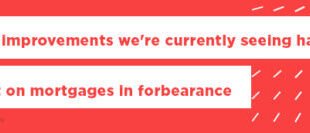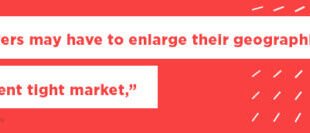
Statements like “interest rates are at record lows” make for good headlines. And they certainly motivate prospective renters to get up off the couch, shift their house hunting into a higher gear, and take advantage of the current low, low rates.
Maybe you’re pre-approved for a home loan and you’re starting to house hunt. Or perhaps you just found your dream home and are ready to put in an offer. Or maybe you bought a home back when rates were higher and you’re hoping to shave your monthly payments by refinancing. Locking in a low interest rate today can protect you against any increases before your home loan closing date.
It sounds smart and straightforward, but like everything else in life, it could come at a cost. Fees for a mortgage rate lock don’t always come up in budgeting discussions, but there are potential fees associated with locking in your mortgage rate or extending a rate lock period. Let’s walk through that process below.
First, let’s define a mortgage rate lock
As a prospective homebuyer, you want to find the lowest possible interest rate on your mortgage — one that results in a monthly payment that fits your budget: the lower the rate, the more attractive the loan. The last thing you want is for that rate to rise before your loan is finalized.
Locking in your mortgage rate is a guarantee from your lender that the rate you’re quoted is frozen. Regardless of what happens in the market, and as long as there are no changes to the loan application or your financial situation, that’s the rate you’ll get when it comes time to close on the loan. It’s basically a “what-you-see-is-what-you-get” situation — but with a time limit.
When should you lock-in on an interest rate?
Timing is everything. The moment that you’re allowed to lock in your interest rate depends on the lender. Some allow homebuyers to lock in a rate at pre-approval. Others may not offer a lock-in until a seller accepts a buyer’s offer.
Rate locks are typically good for 30-60 days, but some locks can be as short as 15 days, and extensions can be requested for 120 days and sometimes longer. That helps if you’re still shopping for a home in the same price range, but you want to be guaranteed that your monthly payments won’t shift dramatically. If you need to extend a mortgage rate lock, there may be additional fees applied, so make sure you give yourself time to close on your loan before your rate lock expires.
Your loan officer will help you make the call, basing it on where they feel the market is going and their experience with delays that can make closing dates shift. Depending on where you live and how active the market is, the time it takes to close can vary. The best way to predict this is to ask your lender about the expected time to close and then build a bit of a cushion around that period before you lock-in.
Is there a fee to lock-in an interest rate?
Whether or not you pay a fee depends on your lender, the type of loan you’re applying, the amount borrowed, the term of the loan, and the length of time you’ll want to lock that rate in for. Some lenders may offer the initial lock for free as part of the loan process, but it’ll be time-sensitive, and if an offer falls through or a closing date gets pushed out, the lock-in may expire.
If your locked rate does expire before the closing date, your lender may offer to extend the rate lock, for a fee. Typically, a mortgage rate lock extension fee will be less than half a percent of the loan amount. Actual costs will vary depending on the length of the extension. You might find yourself paying more for a 45-day extension than for an extension of a week or two.
If you’re unable to get an extension, the rate you locked in might no longer be available, and your loan would need to be reconfigured based on the currently available rates.
What if rates go down?
Watching interest rates is often like watching the stock market, or a roller coaster. You can’t really predict if rates will go up or go down. Even mortgage professionals are often wrong. So, yes, rates may continue to dip after you lock-in a rate but before your closing. Talk about FOMO.
To guard against this, ask about a “float-down provision” on your lock. A float-down means that if rates fall before closing, you get the benefit of borrowing at the lower rate. If rates rise, however, you’re protected by getting the interest rate you were quoted. There may be an additional cost for a float-down, so be sure to talk to your lender about the availability and any additional fees before locking in.
Otherwise, if rates go down, you may have the option to do what is referred to as a “withdrawal.” Here, you’ll be able to withdraw from the current agreement. However, you’ll need to be mindful of this upfront and ensure that a withdrawal is an option with your lender.
Ask about a Movement Mortgage rate lock
As a buyer, the benefits of a rate lock far outweigh the risks. But it’s not just about locking in a super attractive rate; it’s about keeping fees down and protecting your home buying power.
If you’re starting to shop around for a mortgage and trying to find the best rate, chat with your local loan officer. They’ll be able to look through your finances to give you your options, help you navigate what rates in the market are doing, and can walk you through the home loan process.
Until then, explore our loans for buying or refinancing a home, or if you’re ready, get your application started online.



